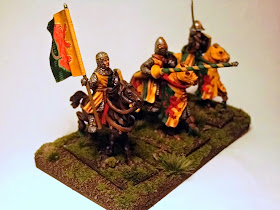Usually the vast majority of people associate the Black Country with a grim industrial landscape which is understandable, there has been heavy industrial activity associated with the area practically nonstop since the early 17th century. However drive for a few miles towards the south west and you will find some of the most attractive quintessential countryside of the English midlands. Such a place is the area around Kinver, South Staffordshire which I always associate with happy childhood memories.
 |
| Main Entrance to Drakelow Tunnels |
 |
| The chosen few - Women, children and fat, bald blokes called Matthew first! |
The reason for this is because way back in my youth on a typical Sunday afternoon my older brother and myself were often taken on long country walks by our parents (I now suspect this was to wear us out after we had consumed unhealthy amounts of sweets and fizzy pop over the weekend). Here we would charge with reckless abandon around the remains of the impressive iron age fort and a rundown concrete pillbox creating merry hell, reenacting battle scenes from whichever war film we had recently seen on the telly. Even as a child I often wondered why there was a pillbox, located there for no obvious reason, slap bang right in the middle of the countryside.
I had no idea that almost literally underneath my feet was a secret WWII factory and a genuine nuclear bunker. Three and half miles of tunnels were dug out the living rock. It was only within the last year or so that I knew of its existence.
After the heavy bombing in 1940 of Coventry and in particular the destruction of a Rover factory that supplied engine parts for the Bristol Aeroplane Company, the Government realised it needed a safer local option to supply factories in Acocks Green and Solihull. It was decided to create a series of tunnels that would be difficult to spot from the air and more importantly would be relatively safe from bombing.
 |
| WWII kitchen |
 |
| WWII kitchen - deep fat fryer (chips!) |
 |
| WWII graffiti |
After the war the site was used as a military storage area. During the Cold War a smaller section of the tunnels were converted into a nuclear bunker that would cover the southern midlands area, complete with communication equipment, several blast doors and decontamination areas. The site was eventually decommissioned by the Government in the early 1990's.
A full history of the site can be found on the following sites:
Wandering around I noticed that several of the walls appeared to have been vandalised by someone with a sledgehammer, however I later read that recently the police had discovered a large illegal drug factory within the tunnels so the damage was probably the result of the police raid.
The site reminded me of Mimoyecques (the relatively little know V3 cannon site for one of Hilter's planned vengeance weapons which could have obliterated London) and the WWI forts in the Verdun area. The equipment within the structure gives the place a quite eerie atmosphere.
I certainly wouldn't like to be stuck down there overnight, some of the rooms seemed to have come straight out a horror video game.
 |
| Original site GPO teleprinter |
The intention is to eventually open the tunnels as a museum, until then the volunteers that look after the tunnels hold regular open days, details of which can be found their Facebook page. If you have the opportunity to visit then I would strongly recommend that you do.
 |
| Entrance & exit - original blast doors |











































